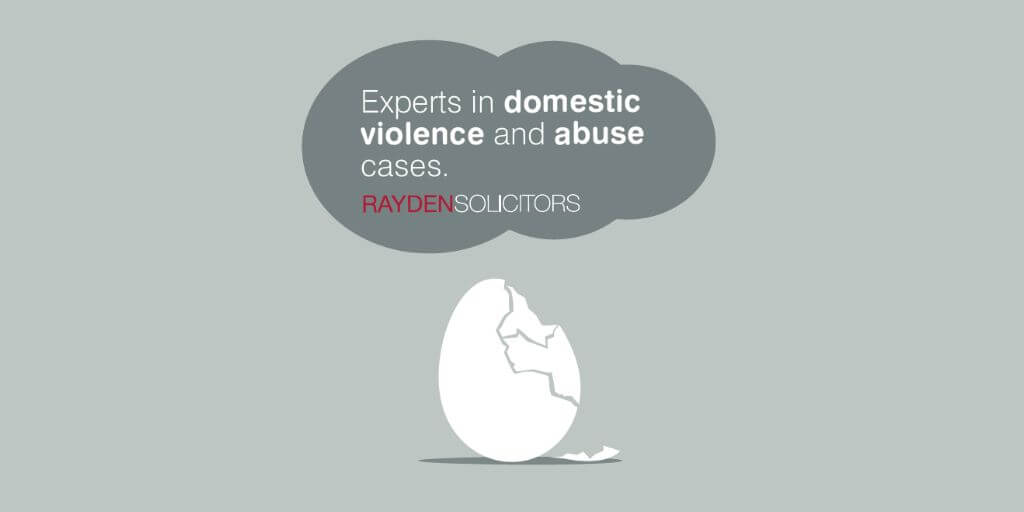In a series of blogs Legal Director, Nicola Meldrum, joins with guest author Sunita Anderson who is a survivor of domestic violence and now coaches and mentors other survivors through domestic abuse recovery. Together they look into what domestic violence is, the different forms it can take and the route out of an abusive relationship.
STARK STATISTICS
Domestic abuse is prevalent in more homes across the UK than the average person might realise. The reported Government statistics (2021) indicate 25% of all women in England experience domestic abuse in their life and that every week 1-2 women die due to domestic abuse. These statistics excludes unreported cases and male victims so the reality is that the figures are much higher. There was a sharp increase in cases during the global coronavirus pandemic, which is typical of lengthy locked down situations. There was certainly a clear increase in new enquiries being made to our firm throughout the pandemic of cases involving domestic violence.
WHAT ARE THE SIGNS TO LOOK OUT FOR?
Sunita is clear that before we define ‘domestic abuse’, it’s important to work backwards and familiarise ourselves with the signs. The reason this is important is because when you are in an abusive relationship the definition is off the radar. Feelings count more. It can creep up on you gradually, give you a loud shock and then quickly disappear. It does not feel like abuse. It feels like a bad mood, an off day, a rough patch. It feels temporary and excusable. This is how denial begins and whilst one party is blindly defending that all is well, it’s merely a hiccup in the relationship, the other is further cementing coercive and controlling behaviours.
As Nicola knows very well, this is so obvious when victims of domestic abuse come and meet a specialist family lawyer for the first time. Very often they have been living in a controlling and abusive relationship for a long time without realising it. They have not been able to recognise that some of what they consider “normal” is actually an abusive behaviour. If they have recognised the abuse, often they have felt totally trapped and helpless and haven’t known where to turn.
Every client is at a different stage of their journey but at that early stage we will talk through their experiences in a sensitive way and ask questions that will enable us to determine what legal steps should be taken.
We are committed to providing a holistic approach and where clients need additional non-legal support we will signpost clients to other resources, like Sunita, to ensure that they are fully supported throughout their journey.
Sunita:
Turning back to the signs, coercion plays with the way someone thinks, makes them question themselves to the point of confusion so that the doubt is so great it is rarely discussed with anyone outside of the home.
Nicola: We often find that clients do not realise the full extent of the abuse they have suffered because they have been made to believe that all of the difficulties in their relationship were of their own making. They have often been so isolated from family and friends that they have no one to help them recognise the abuse and find a way out.
Sunita :
Even with a clear head, the signs can be incredibly subtle, but perhaps some of these may feel familiar:
GASLIGHTING
Gaslighting is harmful mental abuse that tests the victim’s sanity. The abuser twists what the victim says and does, and may even fabricate tales of what the victim has said or done. It reaches a point where the victim does not know what is true anymore, doubt is so deep that they believe what the abuser tells them. Because of this, the victim places a false trust in the abuser, giving them control.
CONSTANT CRITICISM AND EVERYTHING IS YOUR FAULT
These can be throwaway remarks which on their own do not seem too bad but can wear the victim down overtime. Things like “you rush things”, “you take too long”, “you do everything the wrong way”. Criticism can also come in the form of cutting remarks and hurtful insults, especially if made in front of an audience. This humiliation is psychological abuse which eats away the victim’s self-confidence and, worse, may lead to the victim seeking the approval and validation of the abuser.
SOCIAL ISOLATION
Often slowly, time spent with family and friends shrinks away. This is completely manipulated by the abuser as a plan to eliminate any form of outside influence in order to have complete control. Excuses to not attend a family occasion or friend’s party, guilt-tripping the victim to ‘not go and leave them alone’ or even being direct with a choice of ‘me or them’. Alternatively, the abuser might cast blame on someone the victim knows for ‘wronging them’ or ‘treating them badly’. Gradually turning the victim against that person and staying away.
BEING MONITORED
Linked to social isolation is technological abuse – calls, messages, even emails are monitored so that the abuser has tabs on what the victim is saying to others, what they are doing and where the victim is at all times. The abuser may not stop the victim, but can often interrogate the victim on who else was there and demand a full disclosure of all conversations. Sometimes they may insist on coming along to further monitor what’s happening in person.
A further extension of this can manifest in forms of financial abuse – the abuser monitors what the victim is spending, what the victim is purchasing, possibly restricting access to money, and putting limitations on shared credit cards. “But it is [the abuser’s] money or [the abuser] is the one who works or is better at managing budgets and finance things” – these are all classic responses and may also all be true, but it is the intimidation and monitoring that makes it wrong.
STONEWALLING
In contrast to keeping the victim all to themselves, the abuser can give the silent treatment for prolonged periods of time. This lack of contact or communication amounts to ghosting, but instead of walking away, the victim becomes obsessed with making it right – perhaps from constant gaslighting the victim believes they have done something wrong to cause this. Choosing to close off and detach is an emotional abuse with the visual impact of building up a stone wall barrier. It may not always be silent, but it is an abusive form of shutting down close connections.
NOTHING IS YOUR CHOICE
The victim no longer feels desirable anymore. If you do get intimate, it is on the abuser’s terms: when they want, how they want. The victim feels that they have to go along with it, feeling used, or worse still if the victim finds the courage to say no, it won’t be received well at all.
BEING THREATENED
This is when the abuser dares or gives an ultimatum to manipulate the victim into doing something of the abuser’s bidding. These can be physical threats and may also be aimed at another person or even a pet. “If you even think about doing ‘x’ I will tell everyone what a terrible person you are!” or “If you don’t do as I say then that is the last time you will see your cat!” The danger here is knowing that the abuser may not be calling the victim’s bluff and might actually see the threat through.
If the content of this article resonates with you and you feel you need to discuss the issues in confidence please do get in touch with either Nicola or Sunita. At Rayden Solicitors we have specialist family lawyers who have vast experience in advising victims of domestic abuse, to help them get protection for themselves and their families and find a secure and safe future.








